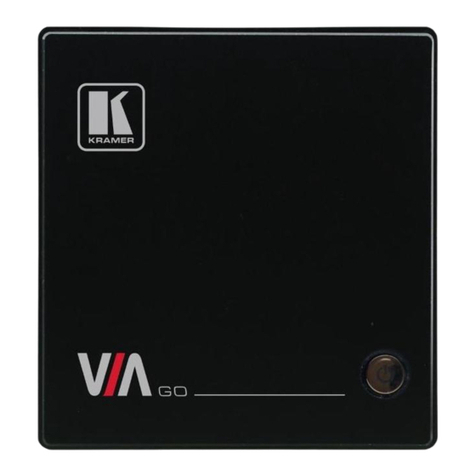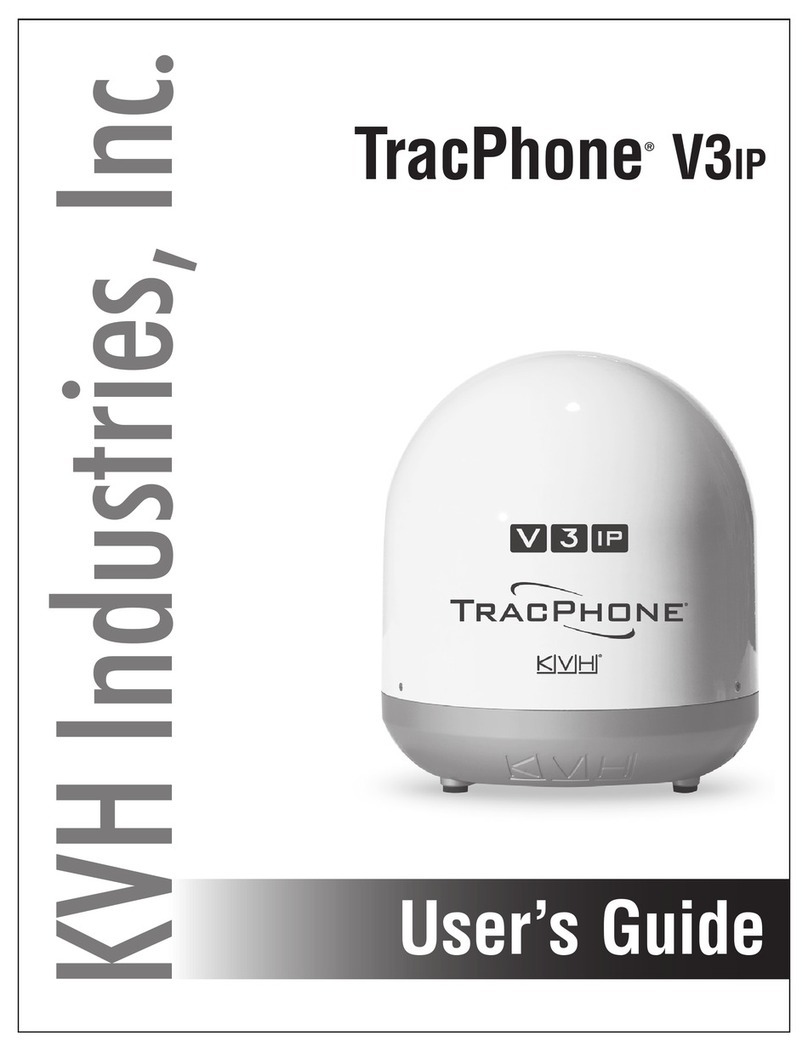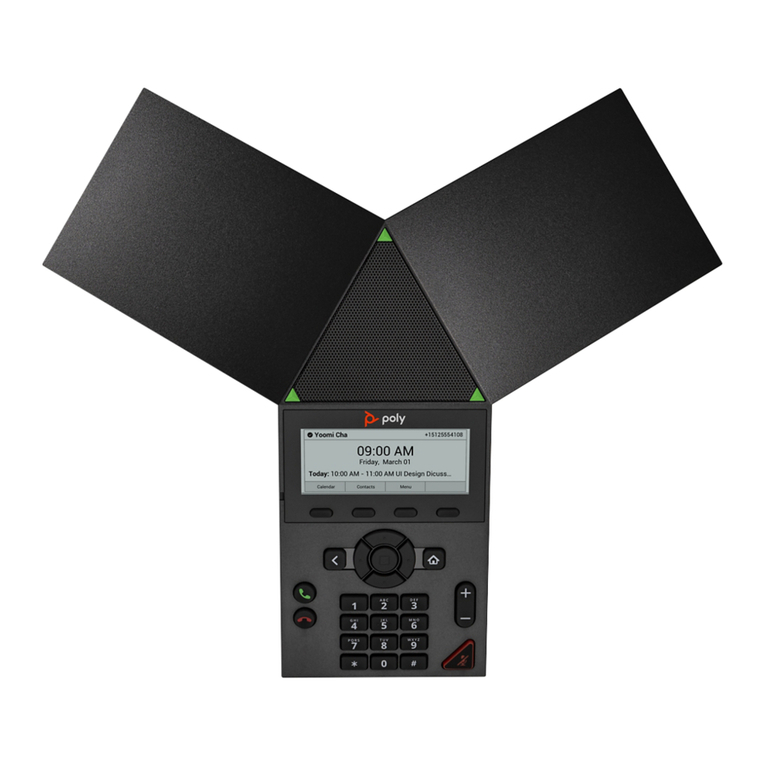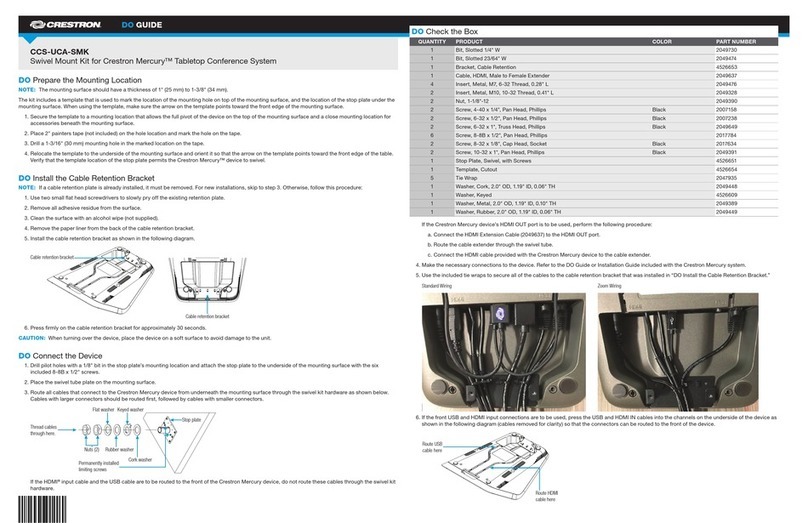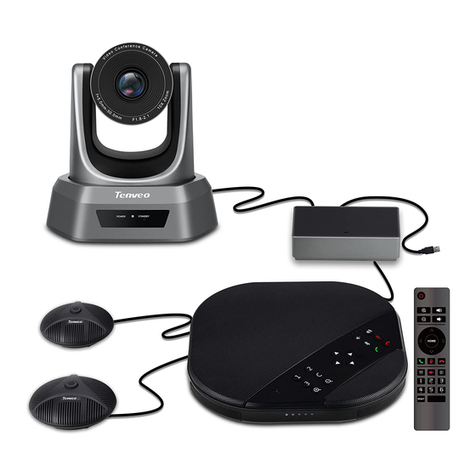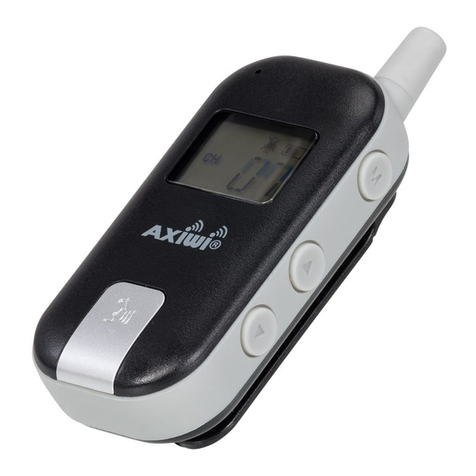
TracPhone V7-IP Installation Guide
1
mini-VSAT Broadbandsm System with CommBox-ACU
KVH, TracPhone, CommBox, and the unique light-colored dome with dark contrasting baseplate are trademarks of KVH Industries, Inc.
mini-VSAT Broadband is a service mark of KVH Industries, Inc. All other trademarks are property of their respective companies.
The information in this document is subject to change without notice. No company shall be liable for errors contained herein.
© 2012-2013 KVH Industries, Inc., All rights reserved. 54-0782 Rev. B
This guide explains how to install the TracPhone V7-IP mini-VSAT Broadband satellite
communications system. Operation instructions are provided in the Quick Start Guide.
Installation Steps
CAUTION - RF Radiation Hazard
Who Should Install the System?
To ensure a safe and effective installation, only a KVH-certified technician should install the
TracPhone system. To find a technician near you, visit www.kvh.com/wheretogetservice.
Technical Support
1. Inspect Parts and Get Tools ................. 3
2. Plan the Antenna Installation .............. 4
3. Plan the Belowdecks Installation ........ 6
4. Prepare the Belowdecks Units............. 7
5. Prepare the Antenna Site.................... 10
6. Remove the Shipping Restraints ....... 11
7. Prepare the RF Cables......................... 12
8. Wire the Antenna ................................ 13
9. Mount the Antenna ............................. 16
10. Wire the Belowdecks Equipment...... 18
11. Connect Power......................................20
12. Turn On the System .............................22
13. Update the System Software...............23
14. Customize the Web Interface..............24
15. Set Up No-Transmit Zones .................25
16. Test the System .....................................27
17. Connect Vessel Computers .................28
18. Connect Vessel Phones & Options.....30
19. Educate the Customer..........................31
The antenna transmits radio frequency (RF)
energy that is potentially harmful.
Whenever the system is powered on, make
sure everyone stays more than 36 feet
(11 m) away from the antenna. As shown in
the illustration, no hazard exists directly
below the antenna.
North/South America, Australia:
Phone: 1 866 701-7103 (U.S. only)
Phone: +1 401 851-3806
Europe, Middle East, Asia, Africa:
Phone: +45 45 160 180
